

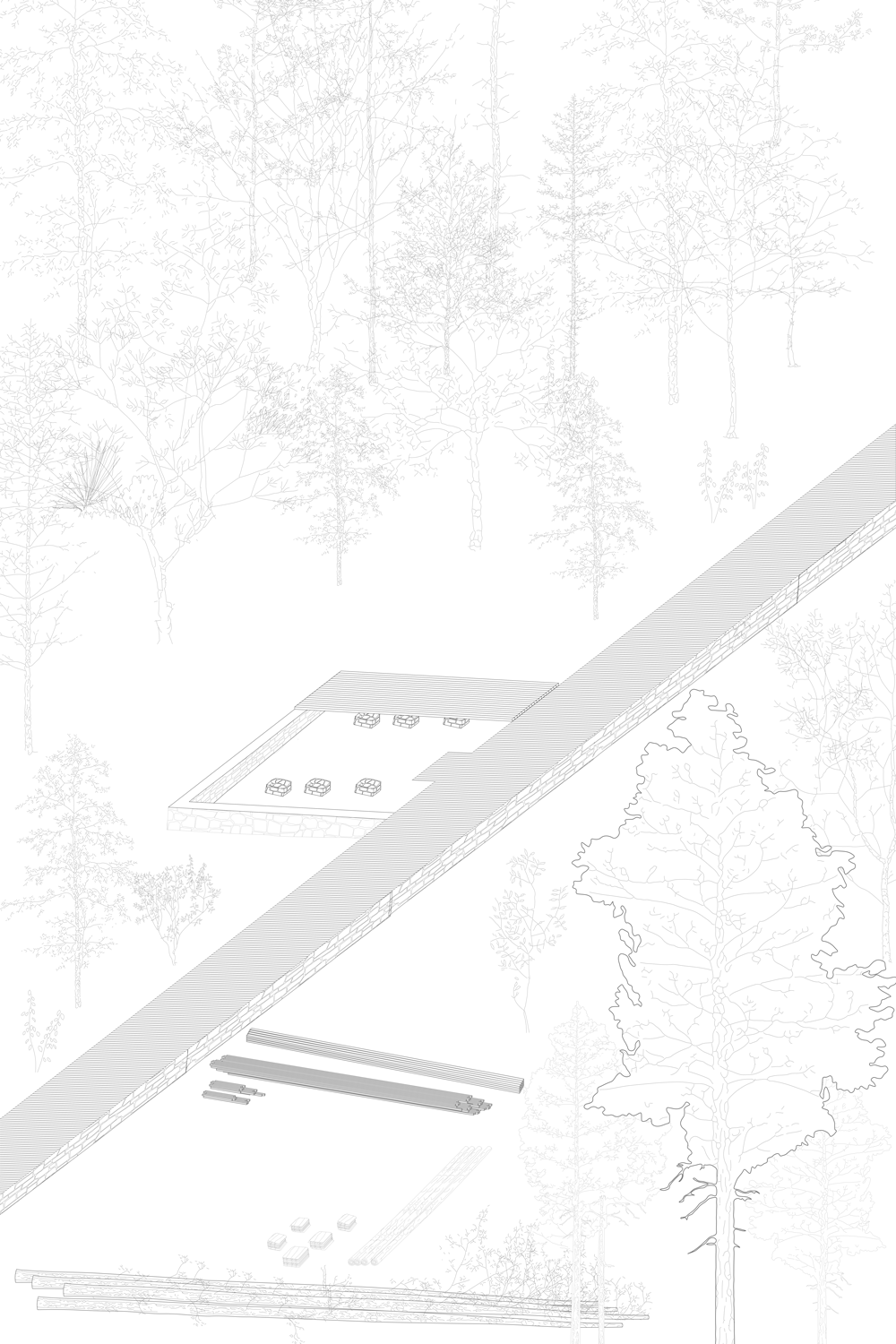
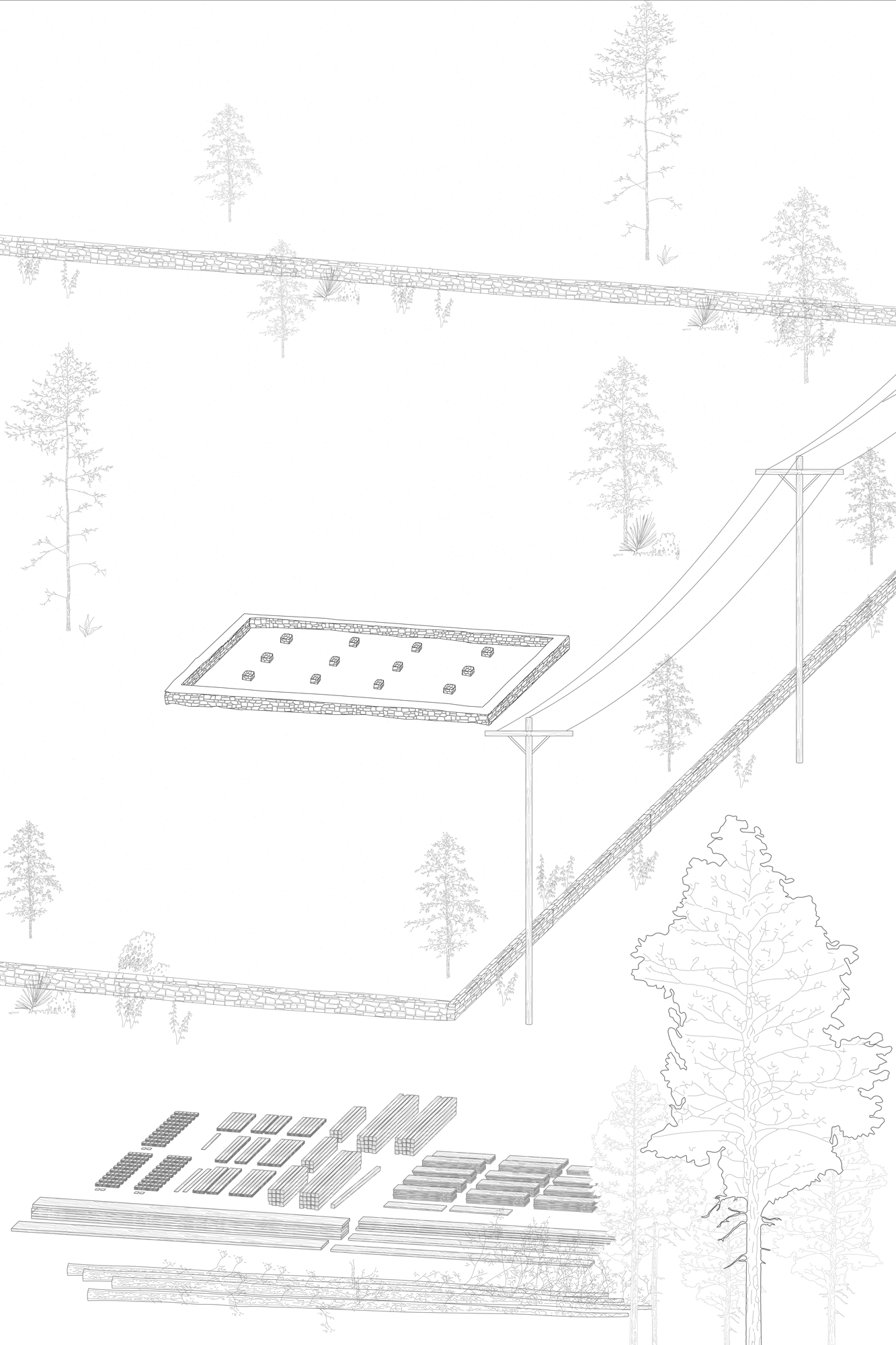
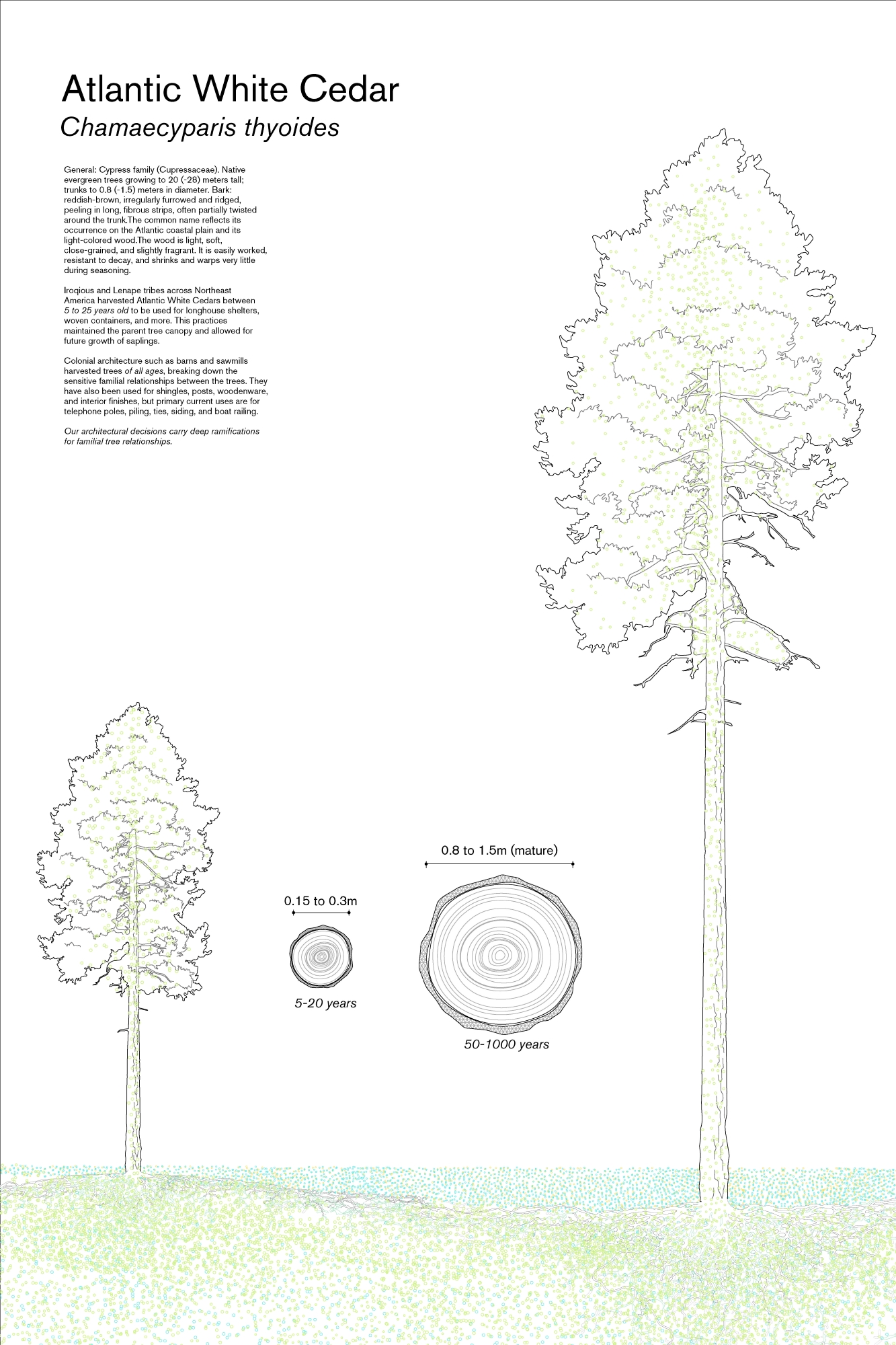
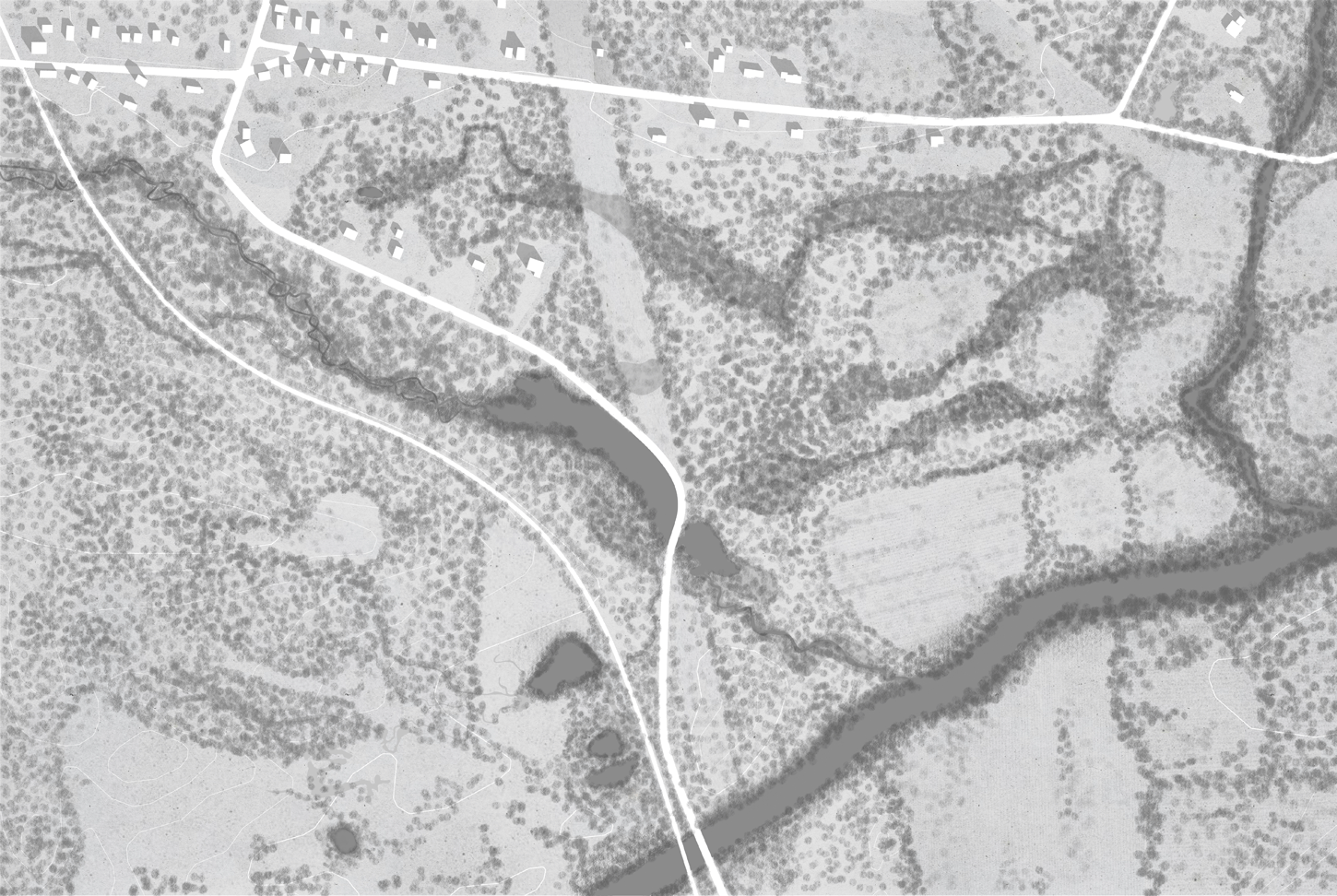
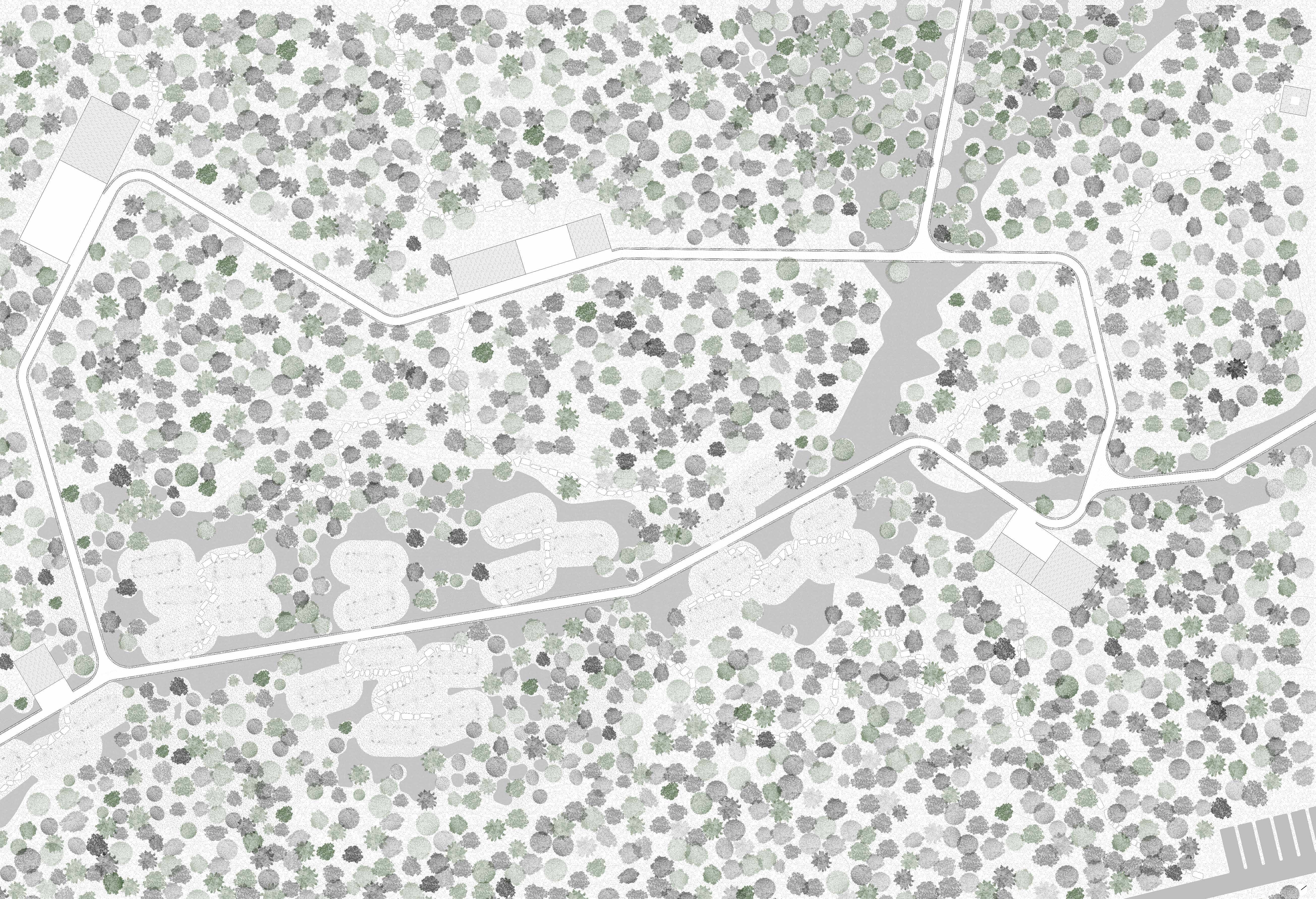
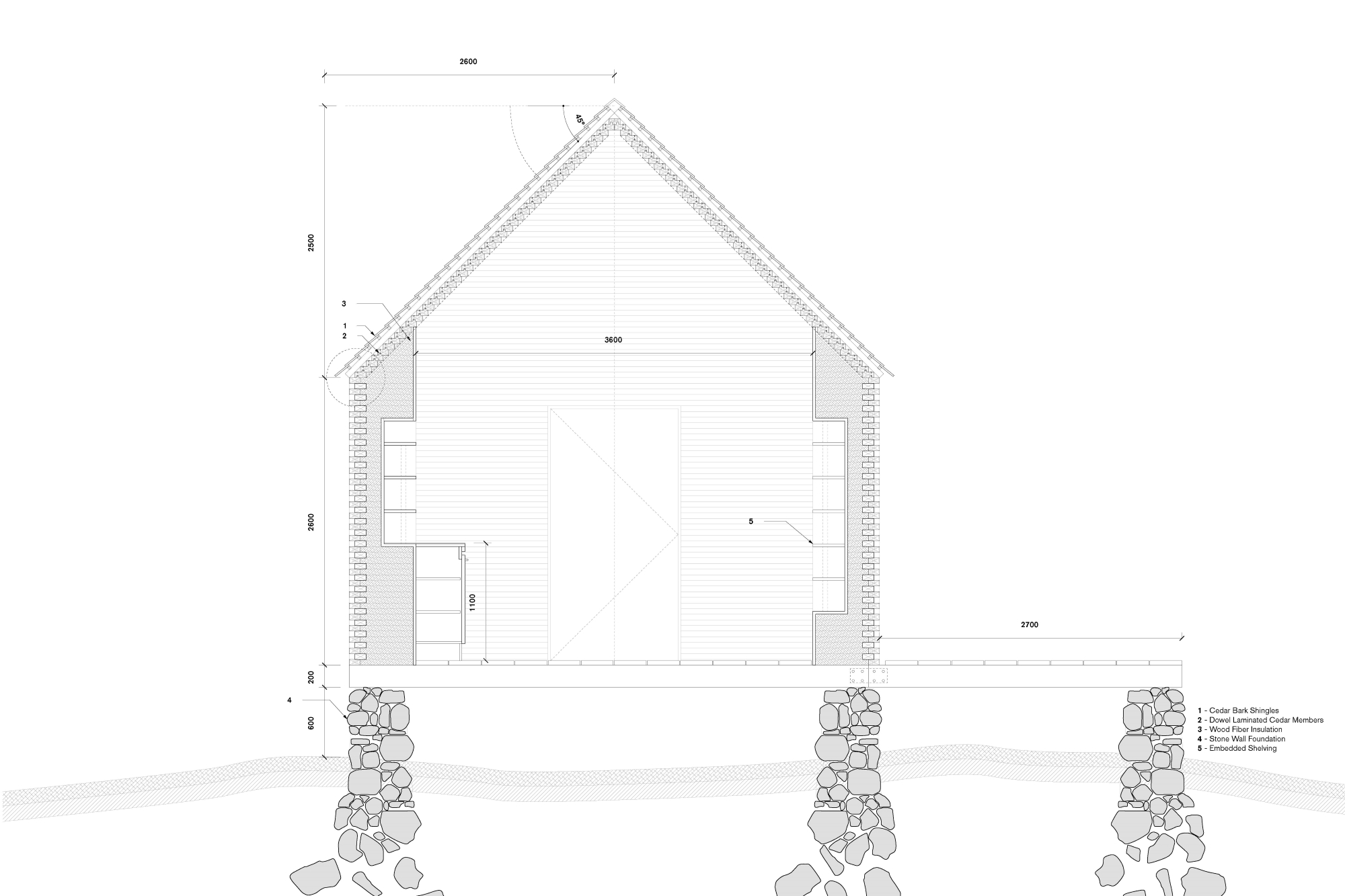





“RESURGENT WETLANDS: RAMAPO-MUNSEE LAND RECLAMATION IN THE BLACK DIRT REGION”
IS A PROJECT BY ZACK BRYSON AND I.
We researched the history of and intervened within the thirty-two square mile, agro-industrially transformed Atlantic White Cedar wetland ecosystem in Orange County, NY. The original wetland-watershed was once a natural resource heartland of the Munsee-Lenape Native people since time immemorial, providing fresh spring water, building material resources, animal grazing and hunting grounds, and polycultural farming and foraging grounds for its local residents. The relationship between these human settlements and the wetlands were interdependent, with all resourcing practices positioned to ensure the future health of the wetland-watershed ecology.
The Munsee people and settlements, their resourcing practices, and their histories were all but erased following Dutch colonization in the 18th century. The wetlands were dubbed “The Drowned Lands” by the Dutch, a term which propelled a negative view that these wetlands required “reclamation” by Dutch agricultural standards. By 1835, the wetland’s main artery, the Wallkill River, was straightened into a canal, and in the decades following almost all of the original Atlantic White Cedar wetland forests were removed and drained in favor of monocultural farmlands. By the 20th century, the region was known as the “Black Dirt Region” (due to its rich nutrient content), and supplied New York City with the majority of its onions and allium vegetables.
With agricultural production as the cornerstone of the region’s economy, downstream ecologies have paid the price. Due to chemical fertilizer and pesticide contamination, land downstream was severely devalued, and by 1974 the Orange County Landfill was placed directly downstream of the region which rapidly contributed leachate contamination to the mix of ecocidal damage. The landfill was eventually closed in 1998, and today many agricultural plots downstream of the former landfill have been abandoned. Within them, Atlantic White Cedar stands have begun to repopulate the fields, healing monocultural lands back into resurgent wetland ecologies.
Following this research, we looked at current efforts by regional Lenape tribes to reclaim and restore native lands and watersheds in the region, and identified the Ramapo Munsee-Lenape Nation and its constituent network of organizations (including the Ramapo Community Center, Ramapo Land Alliance, and the Munsee Three Sisters Farm located ~50 miles from the site) as potential stakeholders for our integrated wetland design proposal. Our long-term proposal for the true reclamation of this native land to the Ramapo community is centered around a wetland farming and ecological education center in the aforementioned resurgent wetlands, with the main idea driving the programmatic design building off of food sovereignty movements conducted by the Ramapo-Munsee Nation and inspired by related movements such as those of the Menominee tribes in Wisconsin. With this in mind, we have proposed a system of mound-based, polycultural farming, and a series of Atlantic White Cedar buildings to support farming and educational activities. With the intent of preserving overstory trees to support resilient and regenerative forest health, young Atlantic White Cedar trees would provide the material basis for both the buildings and the mound agriculture through the practice of selective trimming. Here, the design of the architecture is a direct response to the needs of the local ecology, kept in direct relation to various forms of food and community resourcing.
In this project, we were able to understand feral, contaminated lands as more than byproducts of extractive agricultural production. Left alone, they began to reinstate their natural wetland ecologies, and from here we were able to find opportunities to reroot traditional Native American resource practices in the contemporary context of land reclamation and resource sovereignty movements.